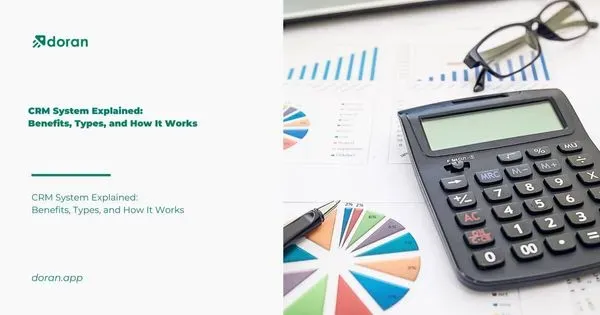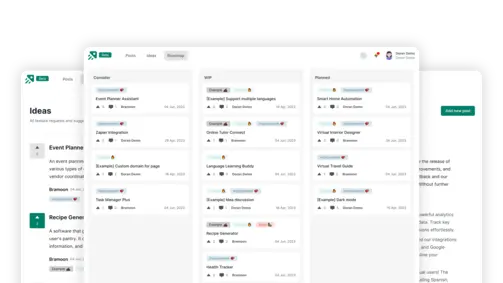Building Roadmaps 101: Essential Steps for Success
Create changelog and product roadmap for your product
Explore nowTable of contents 7 min
A well-constructed roadmap is like a compass guiding you toward your destination. Building roadmaps is not merely about outlining a sequence of tasks; it’s a strategic endeavor that aligns teams, resources, and objectives to achieve a common goal. This article will examine the art and science of building roadmaps. Whether you’re a project manager, a product owner, or a business leader, understanding the principles and best practices of roadmap construction is essential. Join us as we explore strategies, key considerations, and critical steps to create roadmaps that lead your projects and organizations to success.
How Does Roadmapping Work?
Before looking into building roadmaps, let’s learn how roadmapping works. Roadmapping is a method of strategic planning that aids in creating a timeline of your goals. Use it to specify the steps and materials needed to make your vision a reality. Afterward, share the roadmap with executives, team members, and cross-functional groups to foster clarity and alignment around forthcoming objectives and deadlines.

Find out more: [2023] Approach for building your business analyst roadmap
What Makes a Roadmap Work Well?
Building roadmaps can help you get valuable results. But it’s easy to make a bad plan if you don’t know much about the best way to build one. It might be too simple or unrelated to strategy, showing a list of chores and due dates without clear goals. Or it could be too hard. This can happen if you put every idea you can think of on the roadmap or set more goals than you can reach in a certain amount of time.
Here are a few of the most common problems people have with roadmapping:
Strategy
First, let’s talk about the strategy for building roadmaps. If you can’t say what you want to achieve and why it’s important, you don’t have a goal to shoot for. You need a goal to work towards to make good plans and keep track of your progress.
Details
Little details matter in building roadmaps. How do you decide what information to put on your roadmap? This is especially important when you are sharing information with different groups. It helps to change how your plan looks based on who will see it. For example, you might want to show company leaders a big-picture view of business goals and a broad timeline. In contrast, you can show your collaborators a more specific view of the tactical work.
Process
Process is another common problem that people have with building roadmaps. Building and updating a roadmap can take a lot of time if you don’t have a good tool that was made for that reason. Having to update and change your roadmap by hand for different groups is annoying. If you forget to update it even once, the people you share it with will see a document that is outdated and wrong, which could cause misunderstanding and deadlines to be missed.
Roadmaps that don’t work well are often ignored or forgotten because they are not efficient. But a good plan makes you want to move forward. It gets everyone on board with what you’re trying to do and encourages you to take real steps toward your goal and what the roadmap says you’ll do.
How should Roadmapping be Approached?
A roadmap is just a visual schedule that shows what you want to do and why it’s important. But there is a lot of deep thought behind the simple way it looks. Your roadmap results from setting goals, analyzing feedback from other people, figuring out the biggest opportunities, and making strategic choices about where to put your efforts.
Once you know what you want to do at a high level, you can link strategic goals to the work you plan to do by making connections on your roadmap. Mapping work to projects lets you decide what to do first so you can stay on track to reach your goals. A roadmap is both a promise and a guide. It shows how finishing each task will get you closer to your goals.
It’s the art of conveying the story you want your roadmap to tell. You have to show the details in a way that inspires and unites everyone. This means thinking about what information is important, why it is important, and how to show it most correctly and convincingly.

It also means you must think about explaining your efforts in building roadmaps. Organization planning spans can be months, quarters, half years, or even longer. Your planning periods and the amount of detail you need to share should match the time frames you show. For example, a roadmap that shows all the steps needed before a new product can be released next month will have more information than a roadmap that shows a company’s long-term strategy goals for the next three years.
Another essential thing to know about timing is that you don’t have to put exact delivery dates on your roadmap. It’s fine to pick a longer period of time, like a week, month, or even a quarter. Just make sure to look at your plan often and update it when dates change or your goals change.
Common Misunderstandings of Roadmapping
“A Roadmap is the Same as a To-do List.”
Some individuals confuse roadmap with a backlog or a list of upcoming work (in the context of product development teams). A roadmap is a separate document, though you can use it to help prioritize decisions and determine what to work on next. You can maintain your strategic focus by keeping your roadmap separate from other planning tools like backlogs or customer requests.
“Roadmaps Shouldn’t be Modified.”
A roadmap does represent a commitment because it outlines your goals for the upcoming quarter, six months, year, or longer. However, priorities may change because a roadmap is often created at the start of the planning process. Dates and specifics should be adjusted as needed when building roadmaps.

“A Roadmap Will Make Agile Teams Move More Slowly.”
Some agile folks believe that having a roadmap with deadlines will prevent them from delivering and iterating quickly. Using a roadmap can increase your productivity. A roadmap gives the team a clear direction and a rapid way to see priority, uniting everyone around the goals and ambitions. Your foundation is the plan; it serves as the “why” behind the “how.”
More to read: Business Roadmap Template: Guiding Your Business Journey
“A Roadmap Needs Precise Dates.”
A list of precise dates is required if roadmaps are visual timelines, right? Not exactly. While some teams commit to delivering on particular days, others prefer to plan over more extended periods, such as weeks, months, or quarters. You can use a time-based roadmap to set up checkpoints to see how the work you’ve committed to is going.
Building roadmaps is both an art and a science. It requires strategic vision, meticulous planning, and effective communication. Whether navigating a complex project, launching a new product, or leading an organization, roadmaps are your guiding light. By embracing the principles and best practices of roadmap construction, you empower yourself and your teams to navigate challenges, seize opportunities, and achieve success with precision and purpose. A well-built roadmap is not just a tool; it’s a strategic asset that drives progress, fosters collaboration, and leads to remarkable achievements. So, embark on your roadmap-building journey confidently, and watch as your projects and organizations thrive and reach new heights of success.
What to not miss out on our blog
Gain insightful knowledge and invaluable experiences from dedicated experts.

CRM System Explained: Benefits, Types, and How It Works
Discover everything about CRM system. Learn the benefits and how a CRM system works to improve customer relationships and streamline business operations.

Are you ready? Start your free trial today.
Enhance communication, keep track of the progress, understand customers' insight and more by taking your first trial on Doran.
Sign up for free


